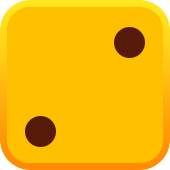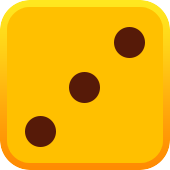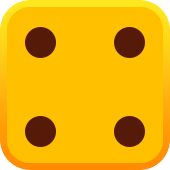












Three Card poker blends streamlined rules with crisp decision points, giving newcomers a quick route to action and veterans a fresh edge to master. In this guide, you’ll learn what the game is, how rounds unfold, which hands matter most, and the smartest ways to wager. Expect concrete tables, clear examples, and practical tips you can apply at the felt or online. Read on to turn three cards into confident choices and consistent, disciplined play. We keep jargon light & cover rules and payouts.
Three Card poker is a casino table game where you get three cards and choose to play against the dealer or chase side payouts. Built as a simple variant, it skips multi-street betting so you act once with full information. It’s a fast-paced casino game that fits short sessions and busy lobbies. For a quick primer on Three Card poker how to play, scan the core elements below, then read the step-by-step sections.
|
Item |
Detail |
|
Deck |
52 cards, no jokers |
|
Players |
1–7 live; many online |
|
Bets |
Ante, Play, Pair Plus, 6-Card Bonus |
|
Goal |
Beat dealer or hit premium hands |
The Three Card poker game took off in the 1990s because rounds finish fast and seats rarely sit empty. By the early 2000s it shared space with Blackjack and Roulette in most major casinos. Clear paytables and a one-choice flow helped it win floor time and mobile visibility. Today it’s a reliable pick for new players and a steady earner for experienced ones.
|
Year |
Milestone |
|
1990s |
Launch and early casino adoption |
|
2000s |
Global rollout and standard side bets |
|
2020s |
Mobile-first lobbies in more states |
Traditional poker pits players against each other across several betting rounds; here you face the house once. There are no community cards, bluffs, or position edges, so results hinge on three-card strength and a fixed threshold. Pace is brisk, outcomes are transparent, and bankroll swings match posted paytables. Some layouts even brand the felt Three Card poker to underline the streamlined simple poker variant format.
Each round starts with an Ante. After seeing your three cards, you either fold or place an equal Play bet to continue. The dealer reveals their hand and compares it to yours using the ranking order and qualifying rule. Side wagers, when offered, pay independently based on your cards only. This walkthrough shows how to play Three Card poker from first chip to payout.
Shuffling uses a standard shoe or continuous shuffler. Each player gets three cards face down while the dealer takes three for the showdown. Other players’ cards never change your odds. Because Three Card poker tips resolution is quick, tables can finish dozens of rounds each hour.
The Ante is your main wager against the dealer; if you Play, you must add a matching bet. The separate Pair Plus option pays when your hand is Pair or better regardless of the dealer. Many rules also add an Ante Bonus for Straight or better without an extra stake. If your casino lists a pair plus bet, check the chart carefully, as strategy Three Card poker returns vary.
|
Wager |
Pays On |
Typical Payout |
|
Ante Bonus |
Straight/Flush/Straight Flush |
1:1 / 4:1 / 5:1 |
|
Pair Plus |
Pair or better |
1:1 up to 40:1 depending on hand |
|
6-Card Bonus |
Best 5 of your 3 + dealer 3 |
Up to 1000:1 on Royal |
Optimal basic play uses a single threshold: make the Play bet with Queen-Six-Four or better, otherwise fold. This balances winning showdowns against weak holdings that leak chips. After you Play, the dealer turns their cards; if they don’t meet the dealer qualification, the Ante wins and the Play pushes. When both qualify, higher hands win and both Ante and Play pay even money, plus any Ante Bonus.
The order differs from five-card poker because probabilities shift with three cards. Study the Three Card poker card ranking so close calls become automatic. Mastering which totals form the Three Card poker the best hands turns guesswork into rules. The table summarizes the rank order with notes you’ll use every session.
|
Rank (High→Low) |
Notes |
|
Straight Flush |
Rarest standard hand; beats all but a Mini Royal bonus |
|
Three of a Kind |
Strong showdown value; no straights or flushes needed |
|
Straight |
In three-card rules, A-2-3 is the lowest straight |
|
Flush |
Suited but non-sequential; weaker than a straight here |
|
Pair |
Frequent earner; kickers break ties |
|
High Card |
Compare highest, then next, then lowest |
A Mini Royal is Ace-King-Queen suited, often the headline item on Pair Plus charts. Some paytables single it out for a top bonus above other straight flushes. In showdowns it is simply the highest straight flush. Always check how your venue labels and pays this Three Card poker best hands outcome.
Any three consecutive cards of one suit form a straight flush. It outranks trips, flushes, and pairs and often shares the top side-bet tier with Mini Royal. This result is rare but more common than a five-card straight flush. When two appear, compare the highest card to break ties.
A Pair delivers steady wins in dealer showdowns and is the main trigger for side payouts. When pairs tie, the kicker decides the winner by descending order. High-card hands are frequent; compare highest, then second, then lowest. Use the Q-6-4 rule to separate playable highs from folds.
Winning long term means consistent thresholds, selective side bets, and clean bankroll rules. First, lock in the Q-6-4 Play rule and avoid hunches. Second, pick tables with friendly Pair Plus charts; one pay step can swing the edge. Finally, keep session limits— Three Card poker strategy is discipline first, luck second.
If you play in a Three Card poker online game real money lobby, use smaller chips while you learn pace and rhythm. Live-dealer and RNG tables pay by the posted chart, so choose the format that helps you focus. Confirm rules such as Ante Bonuses, the 6-Card ladder, and max limits before you start. Keep notes on which sites post the clearest layouts.
Folding everything below Q-6-4 cuts losses from weak kickers while contesting profitable showdowns. Ace-high and King-high are automatic Plays; Queen-high needs at least 6-4. Jack-high and worse should be mucked regardless of suits or gaps. Memorize this and your baseline stays correct across big sample Three Card poker online real money sizes.
Pair Plus stands alone and spikes when premium hands land. Because there’s no decision after the deal, value comes from the paytable and stake size. Favor charts keeping Straight at 1:1 or better and Straight Flush at 40:1 or more. Bet small, steady amounts or skip it when schedules are trimmed.




